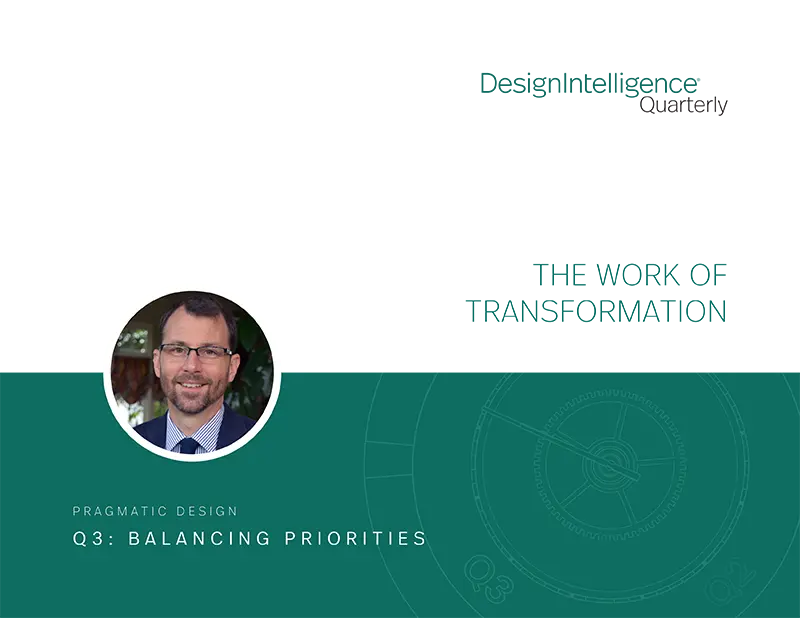The Work of Transformation
by Bob Fisher
September 20, 2023
Balancing vision, imagination, knowledge and the grind to make meaningful change.
Despite being tortured by overuse, transformation is still a sexy word. It appeals to fantasies of a perfect future. For firms with ambition to improve and grow, the idea of becoming the best version of themselves is inspiring.
As one whose job is helping organizations make positive change, there is much I love about the promise of transformation. Properly channeled, it gives leaders the energy they need to envision bold futures for their firms and craft strategies for getting there.
But when transforming professional services firms — from developing new business strategies to fostering cultures that engage everyone in securing new work — problems often arise. The first is misplaced faith. Many leaders believe some insight, bit of practical knowledge or creative idea is the barrier between the firm and a brighter future. They expect transformation to come as an epiphany — the secret that, once unveiled, changes everything.
Here’s the spoiler: There is no one secret, bit of knowledge, insight or single creative idea that is the tipping point for transformation.
That’s not to say knowledge or ideas aren’t important. Leaders need mastery of many things to guide the transformation of their firm. They must understand:
- The future of the markets they serve.
- How to develop bold visions for how their firms will evolve to remain relevant.
- How to evolve the firm’s offerings and bring them to market effectively.
- How to attract, organize and retain talent.
- Finances and how to manage risk.
- How to select, cultivate and transition leaders.
- Their firm’s relationship to data and technology.
All this must be done in ways that ensure creative and technical excellence in the firm’s work.
Given all leaders need to know to effectively run their firms, let alone transform them, it is easy to see why so many believe knowledge and ideas are the keys. In reality, an overemphasis on knowledge and ideas is precisely the thing that can sabotage transformation.
For creative leaders, especially in design professions, the fun part is generating, improving and sharing ideas about possibilities for the firm. When developing strategies, many leadership teams get stuck in a thrilling morass of discussion and analysis. Their minds are alive and inspired with visions of their ideal futures, but their actions don’t change. They believe they are setting the firm on a new path when in fact they are reinforcing the status quo.
The process of real transformation can be seen as a mashup of two old chestnuts from Thomas Edison (about genius and opportunity). It’s 1% inspiration and 99% perspiration, and most people miss it because it comes dressed in overalls and looks like work.
Where does the work come in? At the risk of oversimplifying, three activity types make meaningful change in firms:
- Developing a vision for the desired state (what you want to achieve).
- Creating an actionable plan for how to get there.
- Implementing the plan.
Developing visions and plans requires diving deep, editing, making hard choices (mostly about what to leave out or stop doing), as well as building consensus and buy-in. Creating an implementable roadmap to the future requires creativity, persistence, structured thinking and the ability to bring the rest of the leadership team and staff with you.

Though complex and challenging at times, developing a vision and plan is the straightforward part. Implementation is messier.
A great vision and plan will only stick when it becomes part of the organization’s culture. Why? Because culture is the force that guides the mindsets, beliefs and behavior of the people who comprise the firm. Their perception (and therefore, reality) comes from what they observe and experience — the values and purpose reflected daily in the actions of leaders and colleagues. Words about values and purpose can help or hurt, depending on how they align with the behavioral evidence.
In years of working with firms, I’ve seen large change initiatives succeed and fail. Yes, all that succeeded were based on well-founded and inspiring plans, but not all good plans came to fruition.
The make-or-break ingredient in all transformation attempts is culture change. Altering the way people think, speak and behave is the only way to ensure the vision and plan become the true drivers of the firm’s direction. The bulk of the effort is not in a single grand gesture or inspiring speech about the change needed (even if the rationale is solid). Rather, enduring change comes from inspiring and guiding people to take innumerable small actions and break old habits. Leaders of successful efforts follow up, encourage, handle objections and continue to remind their teams why the future will be better as a result of their efforts.
In this stage and context, leaders are like athletic trainers. They help create a plan for change, then inspire or persuade (or occasionally wheedle and cajole) others to do their pushups and situps. They maintain their coaching as long as it takes. Fitness comes from repetition of exercises, performed regularly, increased at the right times.
The transformation process can feel like a grind because it requires consistency, persistent effort and faith that progress is being made before results are in. It may take six months for the new project management approach to stem a history of losses, or nine months before the new service offerings begin to capture clients’ interest. The leader’s job during that time is to hold the light of inspiration aloft through the dark slog, illuminating the direction and setting the tempo by example and action.
The success of the unglamorous work of transformation is sometimes best seen in hindsight. After three years of dedicated effort, you look back and see the firm’s metamorphosis into the very embodiment of its aspirations.
Bob Fisher is principal with DesignIntelligence Strategic Advisory and a frequent contributor to DesignIntelligence.


